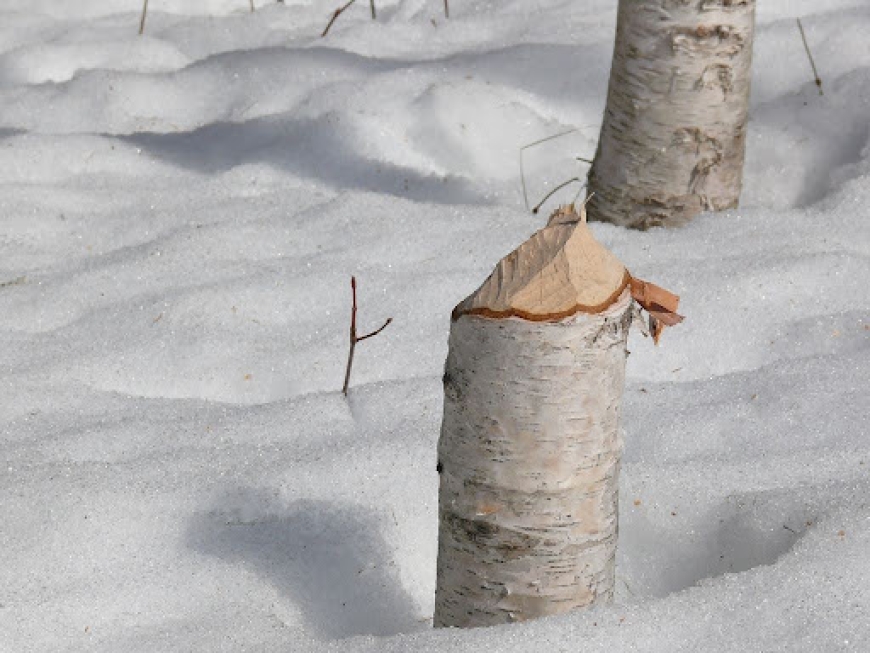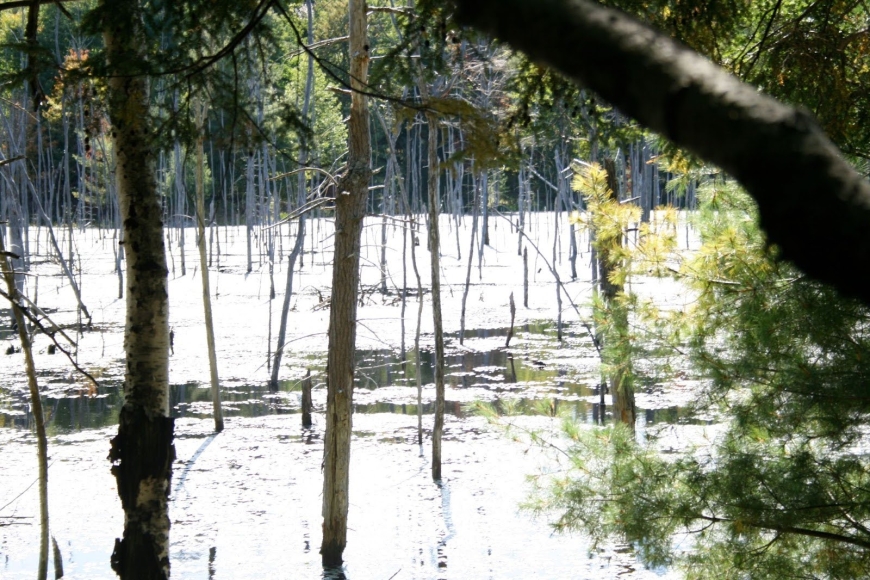





Beneficial Beavers
Did you know that the beaver is New York’s official state mammal? It’s a warranted distinction due to their critical importance in the ecosystem. Beavers are a keystone species, meaning that their presence is essential for biodiversity and a sustained, healthy ecosystem. Beavers accomplish this promotion of biodiversity by altering the habitat of an area by way of building dams and changing water flows. The majority of people, scientists, and governmental actions now support and protect beavers and the critical role they play in the environment. However, this has not always been the case.
Starting in the 1600s, beavers in the Adirondacks were hunted until they reached near extinction by 1900. They were prized for their pelt (which was turned into hats), their skins (used for glue), and castoreum, a secretion used to mark a beaver’s territory (used in perfume and for medicinal use). Many beavers were trapped in the Adirondacks, but exported to European markets. In the 1600s when trapping was extremely prevalent, up to 175,000 skins from across the US were exported by the Hudson Bay Company in just one year.
Hunting this many beavers from the Adirondacks ended in a drastic loss of beaver populations. Their population went from over 100,000 (about nine beavers per square mile) in the early 1600s, to an estimated less than 10 beavers from one family remaining in the Adirondack Park in 1900, near Saranac Lake Inn. Due to beavers being a keystone species, this loss had a significant impact on the Adirondack ecosystems.
In a construction context, a keystone refers to the stone placed at the very top of an arch, completing the structure. Without this stone, the arch would not be complete, and it would not be able to hold its shape. Keystone species in the environment fill that role to complete their ecosystem and maintain its healthy function. Beavers are a keystone species because their dams create a new habitat that many species thrive in. In this way, beavers are also considered to be ecosystem engineers. Their dams create wetland habitats, which are critical habitats for an array of species (such as amphibians and birds), water filtration and retention, and carbon storage. Without this keystone of the beaver, other species would not have this habitat, and the biodiversity of the area would be considerably lower.
Another famous keystone species is the classic case of the Yellowstone National Park wolf reintroduction. Wolves had been hunted to extinction in the park, causing an explosion of the elk population, and subsequent dieback of vegetation. However, when the reintroduction project brought wolves back into the park, the elk population was brought back down to a stable number, allowing for greenery to grow back, stabilizing soil and riverbanks, and bringing a variety of other species, big and small, to the area. This effect that wolves as a keystone species has on the trophic levels beneath it can be applied to the North Country as well. There are virtually no more wolves in the Adirondack region due to habitat destruction and hunting in the 19th century, something that has contributed to the explosion of the deer population.
Bees are another example of a keystone species, as their services for pollination are crucial to the reproduction and survival of many plant species in an ecosystem. Without bees, the ecosystem would collapse. Plants would not be able to reproduce the next generation, and all the species higher up in the food chain would not have enough food for their own survival. However, honey bees are not the most important bee species. That honor goes to native bees! Honey bees are not native to the United States and were introduced as livestock. While honey bees are important pollinators for crops and human-created ecosystems, they outcompete native bees when introduced to natural ecological systems. Some native bees have coevolved with certain species of flower to be “pollen specialists,” which means they only pollinate one species. Consequently, these two species depend on each other for survival, and form a prominent connection in an ecosystem.
While beavers are a keystone species and are important for the overall biodiversity of an ecosystem, their dams can also have non-beneficial implications for certain organisms in that area. When beavers build a dam, they transform what might have been a previously dry and wooded area into a wetland. This brings in many new beneficial species to the area, but previously thriving species including some trees and reptiles may be unable to thrive in the new environment. Beavers who build dams in areas of high human density can also cause issues for human infrastructure.
You may have seen the distinctive sign of a beaver when out in the woods - a tree that's been carved away a bit above the ground, wood shavings scattered haphazardly below. When beavers gnaw on trees to cut them down, they are actually serving themselves many purposes. First, they are gaining material to build their lodge and dam with. Second, they are sharpening their teeth with the action of gnawing on the wood. And third, they can consume all parts of the tree for food! Beavers build both a dam and their lodge with the wood they cut down. The lodge is constructed to have underwater entrances, and is built from logs, sticks, and mud. Beavers are monogamous, and live in their lodge as a mated pair with their offspring, or kits. The kits remain with their parents for up to two years, and beavers live from 16 to 24 years in the wild.
Nowadays, the importance of beavers in the ecosystem is recognized, studied, regulated, and protected. While beavers are still trapped seasonally, this is monitored and regulated by the DEC (Department of Environmental Conservation), and serves as a way for people to recreate more sustainably than has been done with beavers in the past. After the beaver population dropped to near extinction in the late 1800s, action was taken to reintroduce and regrow the beaver population in the Adirondacks, successfully raising the numbers to 15,000 by 1915. Currently, there are between 50,000 and 75,000 beavers in the Adirondacks!
Beavers have had a tumultuous history in New York State, with their population fluctuating due to human interaction and commodification. Now, beavers are recognized as ecosystem engineers and a keystone species. Their presence has a tremendous impact on the ecosystem, allowing many new species to enter the area to boost biodiversity and the general health of the environment. The wetlands that beavers create act as a haven for many species, and a barrier against natural events such as fires. In the North Country, evidence of beavers can be found along many trails, including Hart’s Falls and the Red Sandstone Trail. While beavers were once near extinct, with human help and their population's natural ability to grow, they have bounced back and their population is now stable enough to be New York State's official state mammal.

